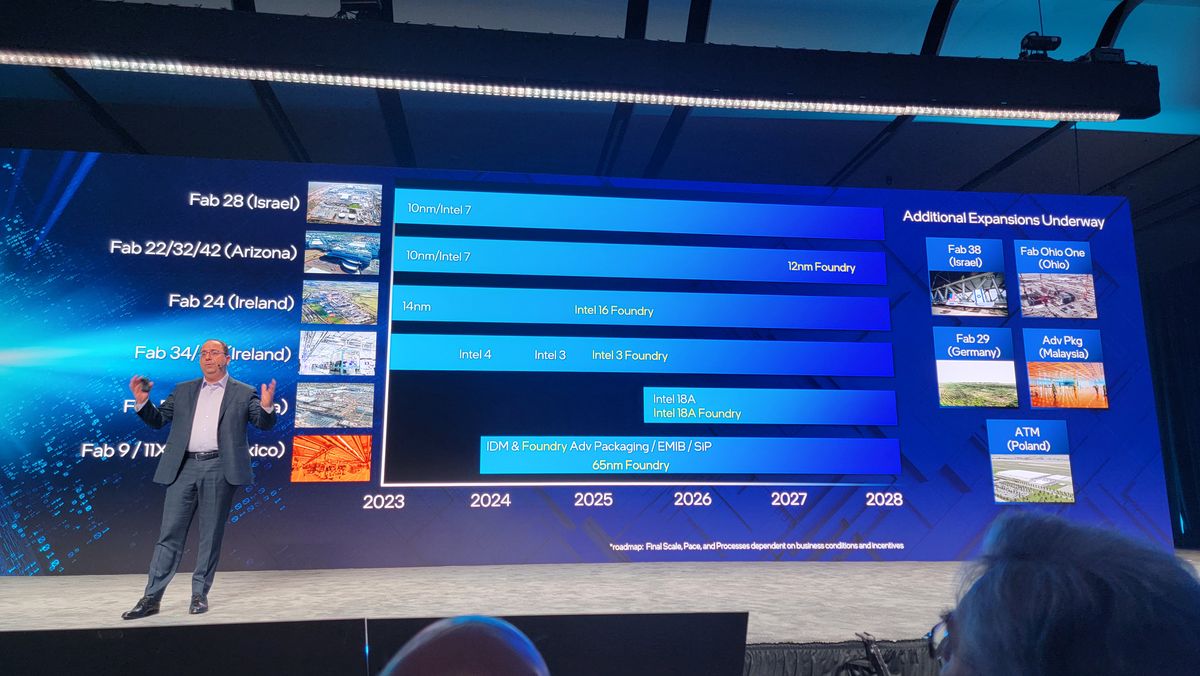Intel 1nm Process (10A) Roadmap
Tuesday, March 05, 2024
Let’s delve into the fascinating world of semiconductor technology and Intel’s ambitious plans for the future. In this blog post, we’ll explore Intel’s latest developments, including the introduction of their 1nm process (10A) and their vision for fully AI-automated factories.
Intel’s 1nm Process (10A) Roadmap
1. What Is the 1nm Process?
Intel’s 1nm process, codenamed 10A, represents a significant leap in semiconductor manufacturing. The term “1nm” refers to the minimum feature size on a chip, and in this case, it corresponds to 10 Angstroms. To put it simply, this is Intel’s first 1nm-class node.
2. Arrival Timeline
According to Intel’s updated production roadmap, the 10A process is set to enter production and development in late 2027. This milestone marks the arrival of Intel’s most advanced node yet. Additionally, the 14A (1.4nm) node is slated to begin production in 2026.
3. Power and Performance Improvements
While Intel hasn’t disclosed specific details about the 10A node, they classify it as having at least a double-digit power/performance improvement over the 14A node. For context, the difference between Intel’s 7nm and 4nm nodes was a 15% improvement. Therefore, we can expect the 10A process to surpass that threshold.
4. Fully Autonomous AI-Powered Fabs
Intel isn’t stopping at advanced process nodes. The company has a grand vision for the future: fully autonomous AI-powered fabs. Here’s what you need to know:
-
Cobots: Intel aims to integrate collaborative robots (cobots) into their manufacturing facilities. These cobots will work alongside human operators, handling repetitive tasks, quality control, and logistics. By doing so, Intel hopes to enhance efficiency and reduce human error.
-
AI Integration: The factories of the future will rely heavily on artificial intelligence. AI algorithms will optimize production schedules, predict equipment failures, and even improve yield rates. Imagine a factory where machines communicate seamlessly, adjust parameters in real time, and self-optimize for maximum output.
-
End-to-End Automation: Intel envisions a seamless flow from design to production. AI will assist in designing chips, simulating their behavior, and automating the manufacturing process. The goal is to create a closed-loop system where data informs every decision, leading to faster innovation and higher yields.
5. The Road Ahead
Intel’s roadmap unfolds over the coming years, with the 10A process as a pivotal milestone. As the semiconductor industry continues to evolve, Intel’s commitment to pushing the boundaries of technology remains unwavering.
In summary, Intel’s 1nm process (10A) represents a remarkable achievement, and their pursuit of fully AI-automated factories is a testament to their forward-thinking approach. Keep an eye on Intel as they shape the future of computing.
